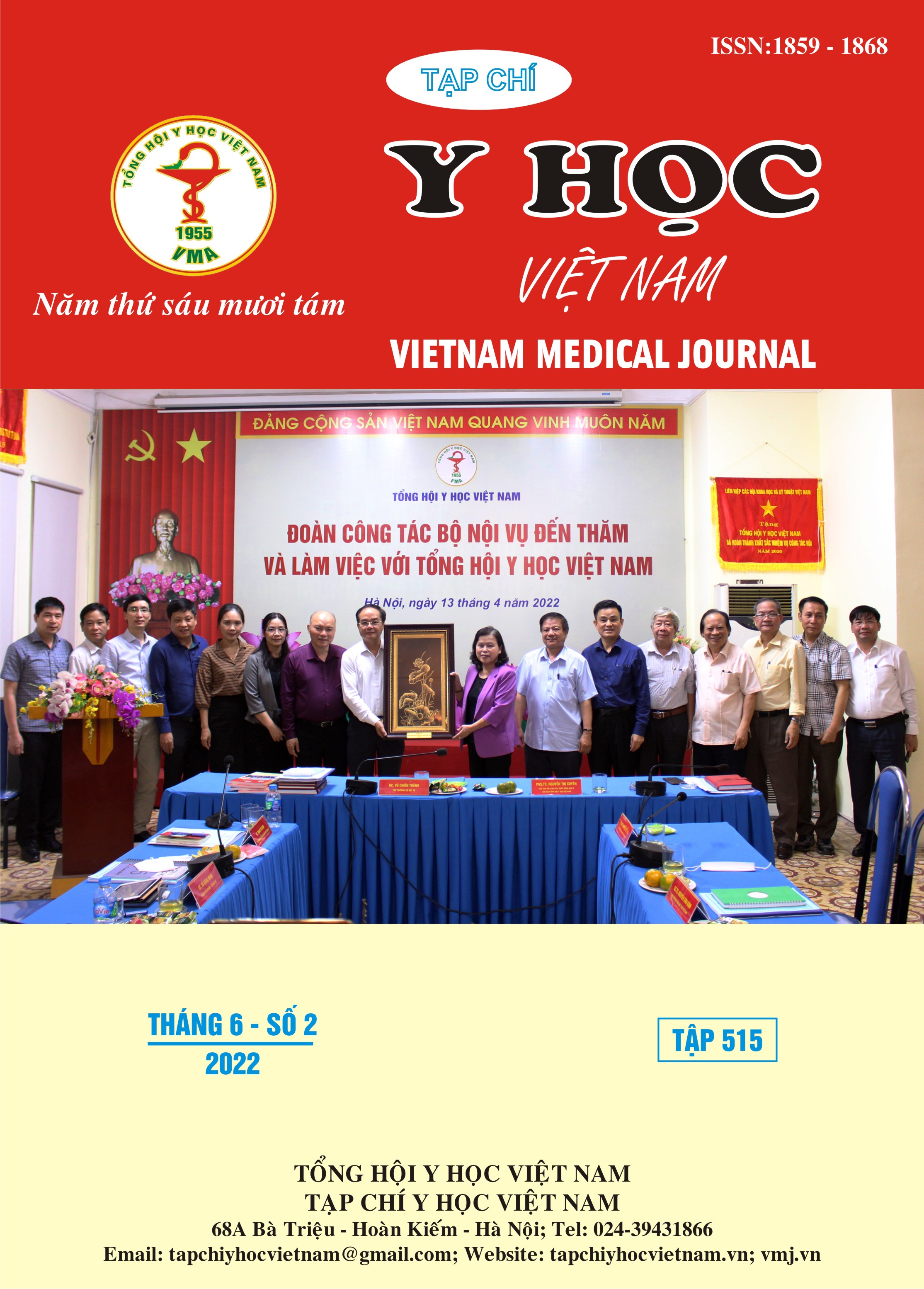TREATMENT OF ACUTE HYDROCEPHALUS AFTER SUBARACHNOID HEMORRHAGE
Main Article Content
Abstract
Background: Acute hydrocephalus is one of the dangerous complications of subarachnoid hemorrhage. The number of studies comparing the effectiveness of medical and surgical treatment in acute hydrocephalus after subarachnoid hemorrhage is limited. Objective: Effectiveness comparisons of medical and surgical treatment in acute hydrocephalus after subarachnoid hemorrhage. Objectives and method: 61 patients with subarachnoid hemorrhage and complications of acute hydrocephalus were treated at the Neurological Center of Bach Mai Hospital from March 2014 to August 2015. Cross-sectional study. Result: Medical treatment 72.2%; surgery 27.8%. Direction of medical treatment: anti-brain edema 77.3%; pain relief, sedation 81.9%; antihypertensive drugs 43.2%; intubation 29.5%. Direction of surgical management: External ventricular drains 17.7%; intra-abdominal drains 52.9%; Actual surgery to remove hematoma combined with aneurysm clipping and intra-abdominal drains accounted for 29.4%. Indications for surgery: large hematoma, a lot of midline deviation accounted for 35.3%; Severe ventricular dilatation accounted for 41.1%. Outcomes of medical and surgical treatment: mainly moderate to severe sequelae. The most common complication is ulcer (medical 52.3%, surgery 64.7%). Conclusion: The medical treatment is still basic, so surgery should only be done for cases where the ventricles are dilated much, large hematomas have displaced a lot of the midline and it is important to pay attention to these cases with high risk of complications.
Article Details
Keywords
subarachnoid hemorrhage, acute hydrocephalus, treatment
References
2. Hoàng Đức Kiệt (1998). Chẩn đoán X quang Cắt lớp vi tính sọ não, Các phương pháp chẩn đoán bổ trợ về thần kinh, NXB Y học, tr 112-136.
3. Trần Viết Lực (2010). Nghiên cứu đặc điểm lâm sàng, hình ảnh chụp cắt lớp vi tính và hướng điều trị chảy máu não thất không chấn thương, Luận văn tốt nghiệp Bác sĩ Nội trú bệnh viện, Chuyên ngành Thần kinh.
4. Khúc Thị Nhẹn (2010). Nghiên cứu đặc điểm lâm sàng, hình ảnh học thần kinh và một số yếu tố tiên lượng của chảy máu não thất.
5. Lê Văn Thính (2002). Chảy máu dưới nhện chẩn đoán và điều trị, Kỷ yếu công trình khoa học, Bệnh viện Bạch Mai, tr 300- 310.


